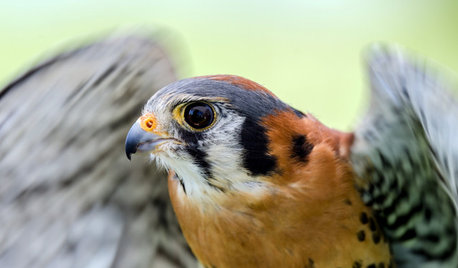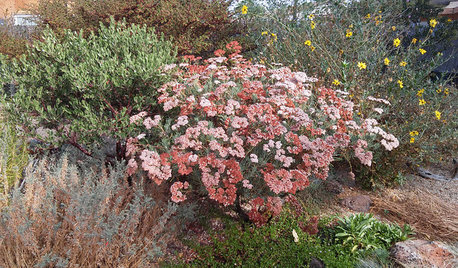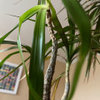Hollyhock rust or a pest?
nancyk
13 years ago
Related Stories

GARDENING AND LANDSCAPINGBreezy and Bug-Free Modern Porches
Screening keeps pests out of these diverse porches across the U.S., while thoughtful designs keep them visually appealing
Full Story
REMODELING GUIDES'Yakisugi-ita' Is Setting the Siding World on Fire
Exterior wood siding created by a Japanese burning technique is now alighting in the Western world
Full Story
GARDENING GUIDESHerb Garden Essentials: Grow Your Own Delicious Mint
Pull out a pot for this one. Mint's spreading habit and hard-to-kill nature can be a blessing — if you're properly prepared
Full Story
HOUZZ TOURSMy Houzz: 2 Dwellings Keep Things All in the Family
Grandparents get a newly built guest cottage in Portland, while the main bungalow benefits from a major overhaul
Full Story
MOST POPULARBlast Decluttering Roadblocks Once and for All
Change your thinking to get the streamlined, organized home of your dreams
Full Story
GARDENING GUIDESBackyard Birds: Create a Home for American Kestrels
These copper-colored birds of prey can be found throughout North and South America and often find habitats near human activity
Full Story
GARDENING GUIDESGreat Design Plant: Eriogonum Arborescens
Plant Santa Cruz Island buckwheat for its striking ornamental appeal. It also provides important wildlife habitat
Full Story
LANDSCAPE DESIGNHow to Create a Cottage-Style Garden
If you like an abundance of plants — and visits from birds, bees and butterflies — this may be the style of yard for you
Full Story
GARDENING GUIDESHow to Keep Your Citrus Trees Well Fed and Healthy
Ripe for some citrus fertilizer know-how? This mini guide will help your lemon, orange and grapefruit trees flourish
Full Story
DECORATING GUIDESBudget Decorator: Let’s Go Thrifting
Dip into the treasure trove of secondhand pieces for decor that shows your resourcefulness as much as your personality
Full StorySponsored
Professional Remodelers in Franklin County Specializing Kitchen & Bath
More Discussions








Dan _Staley (5b Sunset 2B AHS 7)
jean001
Related Professionals
Hershey Landscape Architects & Landscape Designers · Mount Wilson Landscape Architects & Landscape Designers · Brooklyn Center Landscape Architects & Landscape Designers · Bloomington Landscape Contractors · Florham Park Landscape Contractors · Fort Myers Landscape Contractors · Hawthorne Landscape Contractors · Live Oak Landscape Contractors · Morrisville Landscape Contractors · Mount Sinai Landscape Contractors · Northbridge Landscape Contractors · Paso Robles Landscape Contractors · Saint John Landscape Contractors · West Allis Landscape Contractors · Selma Landscape ContractorsnancykOriginal Author
jean001
taz6122
nancykOriginal Author
nancykOriginal Author
rhizo_1 (North AL) zone 7
nancykOriginal Author
jean001
rhizo_1 (North AL) zone 7
taz6122
rhizo_1 (North AL) zone 7
nancykOriginal Author
taz6122
Dan _Staley (5b Sunset 2B AHS 7)
rhizo_1 (North AL) zone 7
nancykOriginal Author